11 Nights / 12 Days
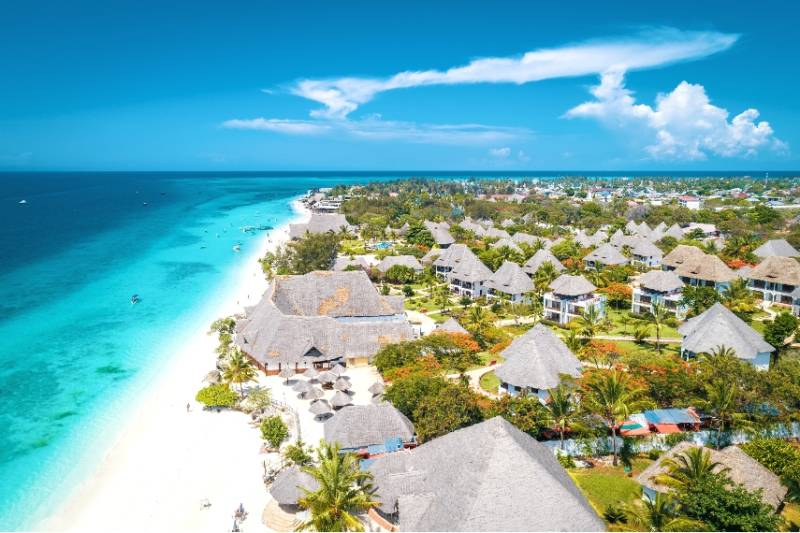
Price
PRICE PER PERSON FOR 2 PEOPLE: USD$ 4852.91
PRICE PER PERSON FOR 4 PEOPLE: USD$ 3981.07
PRICE PER PERSON FOR 6 PEOPLE: USD$ 3699.44
Key
HB: Half Board - Dinner, Bed and Breakfast
FB: Full Board - Dinner, Bed, Breakfast and Lunch
Arusha
Resting at the foot of Mount Meru, the sprawling city of Arusha is known as the safari capital of northern Tanzania. It serves as an excellent base from which to explore the remarkably scenic surrounding area which includes majestic Mount Kilimanjaro, as well as the Manyara, Tarangire and Ngorongoro National Parks. Arusha is a good spot to take a day or two off from the safari circuit as it features a temperate climate and lush surrounds. Visitors can look forward to exploring the wildlife-abundant Serengeti National Park; the magnificent Arusha National Park; and taking on the challenge of climbing Mount Meru, Africa’s fifth highest mountain.
Day Itinerary
Today you arrive at Kilimanjaro International Airport. You will be met with your transfer driver to welcome you and drive to the hotel for dinner and overnight.
The Safari Manager together with the Guide will meet you at the hotel during dinner (depending on your arrival time) for briefing about the safari and the general information
Overnight: Kibo Palace Hotel
When Kibo Palace Hotel opened its doors in 2006, it brought a breath of fresh air and set the pace in hotel standards offering fine cuisine and highest level of professionalism in Arusha. Since then, it has been recognized in various forums. The hotel has hosted important events and continues to accommodate international, regional and local dignitaries, politicians and renowned businessmen and women as well as those coming to visit our beautiful parks. We are very proud of our hotel both for it’s beautiful architectural design, ambiance and the service we provide to match.
The Kibo Palace Hotel enjoys a prime location close to The Arusha International Conferencing Centre, The United Nations and the East African Community Headquarters. Arusha is the gateway to the famous Ngorongoro Crater, Mt. Kilimanjaro, Serengeti National Park, Tarangire, Arusha and Lake Manyara National Parks.
The hotel has 77well appointed luxury rooms and suites with all modern amenities. The Chef and his team serve delectable cuisine and mouth watering desserts that are a favourite for many at our Kilimanjaro Restaurant and Poolside. The hotel’s banqueting services are the perfect choice for any Event Manager as they are hassle free.
Other Services
Forex Bureau and business centre that is open from 07.00 a.m. to 10.00 p.m.
24 hour room service at a nominal fee
Laundry and Dry Cleaning facilities at nominal fee
Complimentary Wi-Fi
Jewellery Shop
Airport pick up and drop off services
Outside Catering
Conference and Event Management
Day trips and Safaris to our game parks
Hotel Activities
Wednesday
Happy Hour from 06.00 p.m. to 08.00 p.m.
Enjoy soothing music at the Pool Side and Tropical Garden
Thursday
Corporate Networking Night from 06.30 p.m. to 09.00 p.m. Every First Thursday of the month with a guest speaker. Great networking opportunity and entertainment.
Friday
African Buffet Dinner at our Kilimanjaro Restaurant from 07.00 p.m.
Live Band at the Pool Side
Saturday
Relax with soothing Ballards at the pool side and tropical garden
Sunday
Swahili Brunch from 06.30 a.m. to 11.00 a.m.
Buffet lunch with complimentary swimming for kids
Live entertainment at the pool side
Share your experience of your stay with us on Trip Advisor and interact with us on Facebook and Twitter.
Our Sales and Marketing Team (Charity, Patricia or Faraja) will be happy to assist you should you require more information on our services.
Basis
Half Board - Dinner, Bed and Breakfast
Tarangire National Park
Tarangire National Park, situated within Tanzania’s spectacular Manyara Region, is an awe-inspiring national park comprising of granite ridges, river valleys, mixed vegetative landscapes, and free-roaming wildlife. During the annual dry season, the Tarangire River is a magnet for thirsty wildlife. Large herds of elephants and migratory wildebeest, zebra, buffalo, impala, gazelle, hartebeest and eland gather and not surprisingly the predators follow. With lion being among the most commonly spotted animal, it is a rare day that a visitor does not spot this majestic animal prowling or grazing. Tarangire is also the one place in Tanzania where dry-country antelope such as oryx and gerenuk are seen regularly. This expansive area is also known for its spectacular baobab trees, its breathtaking views of the Masaai Steppe and the wondrous mountains to the south.
Day Itinerary
You will be picked up at 0600am from the lodge and drive to Tarangire National Park for game drive. The guide will check in for you and you will sign guests’ book. Then after, you will drive in to start your game viewing inside the park. You will proceed driving around until in the afternoon when you will stop for your packed lunch at one of the various picnic sites found in the park. Maybe, the Matete picnic site with a view of Tarangire River.
About the Park:
Tarangire National Park is one of my favourite parks in the Northern Circuit. It is ideally located some 118 km from Arusha and it is a haven for countless numbers of animals. The park itself is massive, at 2,850 square kilometers it is the sixth largest park in the country. Tarangire is probably one of the best places in the world to see large numbers of elephants, living and co-existing in their natural habitats. As other animals, they know that they can always find water in Tarangire regardless of how dry the season. Even if the Tarangire River is completely dry, the elephants still manage to dig through the sand to find water!
If it’s birds you are after, then Tarangire will not disappoint. With almost 550 species it is an ornithologist’s paradise. It is said that the swamps support the largest number of breeding birds anywhere in the world!
In terms of vegetation the park is truly a baobab garden. These giant ancient trees are not only a food, but also a water source, of which animals like elephants make full use.
Drive to the lodge for dinner and overnight
Overnight: Tarangire Simba Lodge
Tarangire Simba Lodge is located near the Sangaiwe Gate of Tarangire National Park, offering views of Lake Burunge. Nearby attractions include the wildlife-rich Tarangire National Park and a Wildlife Management Area. The lodge features classic tents with outdoor showers, wooden floors, and private decks. Dining options include a restaurant serving continental cuisine with fresh local ingredients. Leisure facilities include a swimming pool with a sundeck and an elevated platform for wildlife viewing or dining.
Basis
Full Board - Dinner, Bed, Breakfast and Lunch
Day Itinerary
Visit The Silale Swamps
After an early breakfast, you leave for another game drive in Tarangire National Park.
Being so big you really need to spend time in the park, exploring the different areas. One of my favourite places in Tarangire is the Silale Swamps. Located in the southern part of the park this remote swamp is an absolutely fascinating place to visit.
The swamp covers an area of some 70 square kilometers and it acts like a sponge. During the rainy season water is stored here and in the dry season the swamp slowly releases water into the Tarangire River. The swamp is green for the majority of the year and it makes for an incredibly beautiful backdrop to the dry land surrounding it. To truly appreciate this place, you have to go there in the dry season.
The Silale Swamps attract hundreds of elephants who come to feed on the lush grass, but it is not just the elephants that come here. A mix of animals in all shapes and sizes can be spotted at Silale Swamps – including cats! It is a great place to see the famous tree climbing lions of Tarangire as well as leopards. If you ever hear people say they spotted African wild dogs, then it’s usually in this area. To add to the collection, the Silale Swamps are also known as a great place to see huge African Rock Pythons.
Evening drive to for dinner and overnight at Tarangire Simba Lodge
Basis
Full Board - Dinner, Bed, Breakfast and Lunch
Karatu
Travellers heading for the Serengeti and Ngorongoro Crater will pass through the town of Karatu in the green hills of Tanzania’s northern highlands. Presided over by the towering Ol Deani Volcano, this small, colourful town serves as a popular overnight stop for visitors exploring the area’s many game parks. The town offers a variety of activities including browsing the bustling marketplace, sampling beer at a local brewery, visiting a traditional homestead, or taking a guided walk through the Ngorongoro Forest in search of waterfalls and caves. Whether you are looking for cultural tours, hiking and biking opportunities, a chance to enjoy an authentic rural Tanzania experience, or simply a break between safari game drives, this underrated town has plenty to offer.
Lake Manyara National Park
Situated in Tanzania’s central-northern region with the Lake Manyara to its east and the Manyara Escarpment to its west, the Lake Manyara National Park offers breathtaking views and a large variety of habitats supporting an array of wildlife. This small park is home to surprising biodiversity and features a magnificent landscape of acacia woodlands, forests, baobab strewn cliffs, algae-streaked hot springs, swamps and the lake itself. The park supports over 400 species of bird and the largest concentration of baboons anywhere in the world. Other species to spot include giraffes, zebras, wildebeest, impala, waterbuck, warthog, the Cape clawless otter, and the Egyptian mongoose. Don’t miss the opportunity to see thousands of flamingos on the lake, the renowned tree-climbing lions, and large families of elephants strolling through the forest.
Day Itinerary
Leave the lodge after breakfast and drive to Lake Manyara National Park for game drive. This national park is one of Tanzania’s most dramatically located wildlife areas, consisting of a massive but shallow soda lake (covering two-thirds of the park), located at the foot of the Great Rift Valley’s western escarpment. The park’s varied habitat attracts a wide variety of animals; has a big number of elephants, so many giraffes; zebras, wildebeests, impalas, waterbucks, and warthogs, the less-known shy Kik’s dik dik as well as the Klipspringer that dwell along the ramps of the escarpment. Leopards are hosted within the scattered forests and escarpment, while the healthy population of lions that are widely known for their unique tree climbing capability. In addition, you will not fail to notice the very large number of baboons in this park which can live in sizeable troops of up to 200 members.
With a Bird list of more than 350 species and an alkaline within the park’s boundaries, Lake Manyara National Park is without a doubt one of the best places to visit on a Tanzania Birding Safari. Large flocks of pelicans and pink flamingos are usually spotted in the middle of the lake. While the spoonbills, egrets, herons, stalks and other waders converge around the edges and water meadows. Other habitats such as the evergreen forests and other woodlands serve as a safe haven to many other species like the crowned eagles, created guinea fowl, and the noisy silvery cheeked hornbills. You will spend your day here until late afternoon drive to Karatu for dinner and overnight at Marera Valley Lodge
Overnight: Marera Valley Lodge
Marera Valley Lodge is located between Karatu Town and Rohia Village and to the main road to Ngorongoro and Serengeti. There are 18 lodges with private decks that provide guests with beautiful views of the surrounding areas. The lodge provides free Wi-Fi access to all guests. There is also an outdoor swimming pool, lounge area, bar and dining room.
Basis
Full Board - Dinner, Bed, Breakfast and Lunch
Ngorongoro Conservation Area
Situated in the Crater Highlands in Northern Tanzania, the Ngorongoro Conservation Area is best known for its archaeological and geological significance, rich wildlife, and beautiful scenery. The conservation area encompasses the famous Crater, the renowned Olduvai Gorge and vast plains of grasslands, forests and mountains extending to the Serengeti. This 8000-square-kilometre protected area is recognised for its natural beauty and has been placed on the UNESCO World Heritage List. Visitors flock here to soak up the spectacular views of the Ngorongoro Crater, voted as one of the Seven Natural Wonders of Africa, it is famed for its natural beauty and abundant wildlife. Popular activities include: mountain biking, hiking, game drives, bush walks, and visiting a local Maasai village.
Ngorongoro Crater
Located in Northern Tanzania, the Ngorongoro Crater is best known for its natural beauty and abundance of diverse wildlife; which makes it one of Africa’s most popular safari destinations. Surrounded by Tanzania’s highlands, this UNESCO-listed crater is said to be the world’s largest intact volcanic caldera. Visitors can look forward to spotting the world-renowned Big Five and a host of other wildlife species including large herds of zebra and wildebeest. It is famed as one of Tanzania’s best tourist attractions offering visitors an array of wonderful activities including excellent bird watching, trekking, wildlife viewing, mountain biking and visiting a local Maasai village. Don’t miss the opportunity to jump on an excursion to the magnificent Olduvai Gorge.
Day Itinerary
After an early breakfast, your guide will pick you up at 6.00am and drive to the Ngorongoro crater. After check in you descend down 600 meters into the crater for a full day game drive. Supported by a year round water supply and fodder, the Ngorongoro crater supports a vast variety of animals, which include herds of wildebeest, zebra, buffalo, eland, warthog, hippo, and giant African elephants. Another big draw card to this picturesque place is its dense population of predators, which include lions, hyenas, jackals, cheetahs and the ever-elusive leopard, which sometimes requires a trained eye to spot. You will visit Lake Magadi, a large but shallow alkaline lake in the southwestern corner, which is one of the main features of the crater. A large number of flamingos, hippos and other water birds can usually be seen here. After lunch you leave the crater and drive back to the lodge for overnight
Basis
Full Board - Dinner, Bed, Breakfast and Lunch
Seronera
The Seronera region, in the central Serengeti, is set directly on the Great Migration route and offers excellent viewing of this incredible annual phenomenon, when countless wildebeest flood the area and move across the plains. While migratory game populations fluctuate seasonally, Seronera is still a wildlife hotspot at other times of the year, sheltering the Big Five, among many other species. A number of small campsites provide accommodation and visitors can enjoy hot air balloon trips and walking safaris as well as guided game drives.
Ngorongoro Conservation Area
As previously described
Serengeti National Park
The Serengeti, together with Kenya’s Masai Mara Game Park, constitute Africa's most famous wildlife park, spread over the enthralling landscapes of northern Tanzania. This is a precious ecosystem, supporting the annual wildebeest migration through the Serengeti and the Masai Mara. The largest mass movement of land mammals on the planet involves more than a million animals following the rains, including more than 1.5 million white-bearded wildebeest and 250 000 zebras. Prides of lions, as well as groups of elephants, giraffes, gazelles, and eland, roam among the photogenic vast grass plains between weird-and-wonderful-looking acacia trees. Aside from traditional vehicle safaris, hot-air ballooning over the Serengeti plains and horse riding safaris are on offer.
Day Itinerary
After an early breakfast, leave the lodge at 0730am and drive via the Ngorongoro Conservation Area and head towards the Serengeti National Park.
Leaving the highlands behind, you descend into the heart of wild Africa – the Serengeti National Park – with its endless plains, rolling into the distance as far as the eye can see. You will have a chance to visit one of numerous Maasai Villages found in the area to have a little experience of their culture. Dancing will be performed for you and you are free to join in! You will then head to the central Serengeti area, known as the Seronera area, one of the richest wildlife habitats in the park, featuring the Seronera River, which provides a valuable water source to this area and therefore attracts wildlife well representative of most of the Serengeti’s species. You will have game drive in the area and late in the evening drive to Tanzania Bush Camps arriving in time for hot shower and enjoy campfire before dinner and overnight.
Overnight: Tanzania Bush Camps Central Serengeti
Tanzania Bush Camps Central Serengeti, located in the heart of Serengeti National Park, offers 12 luxurious tents. Each tent is equipped with comfortable beds, en-suite bathrooms and modern safari-style furnishings. Guests can enjoy facilities such as internet access, hot showers and a traditional dancing area. Activities available include game drives, guided nature walks and bird watching.
Basis
Full Board - Dinner, Bed, Breakfast and Lunch
Central Serengeti
Situated in the heart of Tanzania, the Central Serengeti encompasses the world-famous Seronera Valley which is known for its prime wildlife-viewing opportunities. This picture-perfect landscape is characterised by endless stretches of savannah-covered open plains interspersed by rocky outcrops of granite and scattered with acacia woodlands and covered in a network of rivers and streams. The Central Serengeti forms part of the great wildebeest and zebra migration and provides an ideal habitat for a variety of wildlife such as giraffe, impala, waterbuck, hippo, elephant, buffalo, lion, leopard, hyena, jackal, serval and much more. Popular activities include: game viewing, cultural tours, horse riding safaris, and hot air ballooning over the spectacularly scenic terrain.
Day Itinerary
You will rise early to enjoy an early morning a full day game drive exploring the vast Serengeti plains. At sunrise, you may encounter animals grazing in the beautiful light of sunrise and predators may still be busy hunting before retiring to rest for the day. Sunrise on the Serengeti is not to be missed and extraordinary photographic opportunities will abound at this magical time of day. You have the option to return to your accommodation for a hot lunch or to opt for a packed lunch which can be enjoyed at one of the various picnic sites found in the Serengeti. After lunch, you will continue on a game drive. Around the time of dusk be on the lookout for lion.
Cheetah can also be spotted on the plains in the early morning and late afternoon when temperatures are not too high. They rely on daylight and speed to catch their prey. Hippos can be seen in the bigger pools and rivers while crocodiles can be seen sunning themselves on the riverbanks. You will proceed with game drive until late in the evening or late afternoon when you drive back to the camp for dinner and overnight.
Expert Tips
The Central Serengeti, lying at the heart of this spectacular national park, is the most popular region in the reserve for its abundant wildlife, large numbers of big cats and quintessential Serengeti landscapes of acacia-studded savanna. Resident wildlife makes this part of the Serengeti a fantastic year-round destination, but the months of April to June and October to December, when the herds of the Great Migration pass through the area, are when it’s at its peak.
The Seronera River Valley, located in the south-central region of the park, is one of the most popular areas in the entire reserve. Known as the Big Cat Capital of Africa, the Seronera is rich in lion, leopard and cheetah – and people often spot all three in one day of game drives. Look for leopard around the Seronera River, which is home to one of Africa’s densest populations of the big cats, while lions can often be seen on the kopjes (rocky outcrops). The Serengeti Plains – the open savanna south of the Seronera River – are prime cheetah territory. Other animals to spot in the area’s varied habitats of rivers, swamps, kopjes and grasslands include elephant, hippos and crocodiles in the rivers, buffaloes, impala, topi, jackals and bat-eared foxes.
While the year-round supply of water from the Seronera River means that the area is excellent for wildlife spotting throughout the year, April to June is the peak season for game viewing in the Seronera, as this is when the plains are full of migrating wildebeest, zebra and gazelle as they’re making their way up north. The central location of the Seronera means that it’s one of the best places to see the Great Migration in action, as the animals are moving through the area for months.
Highlights
The Central Serengeti is a fantastic area to see the Great Migration in action: the herds move through this section of the park from April to June as they travel northwards, and then they come back again heading south from October to December. Some of the best locations in the Central Serengeti to see the herds include the Seronera Valley and Seronera River, Moru Kopjes, Simba Kopje and Maasai Kopjes.
If you’re after Big Cats, the Seronera area in the Central Serengeti is your best bet: this region is hailed as the best place to see predators – particularly lion, leopard and cheetah – on thrilling hunts.
The Central Serengeti is studded with many rocky granite outcrops, known as kopjes, which are where you should look out for lions and cheetahs. There are also some particular kopje highlights, such the Simba Kopje, or Simba Rocks – the place that inspired Pride Rock in the Disney film The Lion King. The film link is not the only reason to visit this pile of granite boulders however – it’s great spot to see lions, which are often lying on the rocks under the sun. At Moru Kopjes, south of the Seronera River, you can try and search for some of the last remaining black rhinos in the entire reserve – as well as see some old rock art paintings. Then there’s a visitor’s centre for the Serengeti Rhino Project, where you can learn about the important rhino conservation work that’s being done to protect this highly endangered species. Moru Kopjes is also one of the very few areas of the park where you can do multi-day walking safaris.
Hot air ballooning is a must-do when you’re visiting the Serengeti. Floating gently above the grassy plains in the golden light of dawn, spotting animals from your suspended basket is an experience you’ll never forget. If you’re staying in the Central Serengeti, you can get a transfer to and from your lodge or camp to the hot air ballooning launch site near the Masai Kopjes. A champagne breakfast once you land is the cherry on top of an amazing activity.
Basis
Full Board - Dinner, Bed, Breakfast and Lunch
Eastern Serengeti
The rich acacia-dotted plains of the Eastern Serengeti are home to abundant wildlife. Visitors flock here to view the world-renowned wildebeest migration. Some of the best game-viewing can be enjoyed from Lobo on the eastern edge of the Serengeti National Park along the Grumeti River. Popular activities include: taking a guided walk through the spectacularly scenic terrain of the wild Serengeti, jumping on a hot air balloon safari, picnics in the bush, and learning about Maasai culture and history. Don’t miss the opportunity to visit the world famous Gol Kopjes for the best cheetah viewing in Africa.
Day Itinerary
Today you leave early in the morning to visit the Eastern Serengeti in the National Park. You will spend your time in the area looking for the big cats. In the late afternoon drive back to the camp for dinner and overnight
Expert Tips
The Eastern Serengeti is one of the most beautiful regions of the park: mountains, valleys and sweeping grassy plains with are lush in the green season dotted with granite outcrops and sliced through by meandering rivers. It’s one of the more remote regions of the park, which makes it perfect for adventurous travellers who prefer their safaris off the beaten track.
The region can be visited year-round for wildlife sightings, but November to February are the best months to see the Great Migration herds passing through towards the Southern Serengeti. The green season of December to May sees the plains become lush and verdant, which attracts abundant game. Home to the biggest concentration of cheetah on the continent, the Gol Kopjes is the most famous landmark in the Eastern Serengeti, while the area is also known for its lion and leopard sightings.
Under two hours’ drive from the Central Serengeti, the Soit Le Motonyi region, which opened in 2014 after being closed for two decades for cheetah conservation, is drawing visitors for its pristine, totally undeveloped landscapes of grassy plains and acacia woodlands, completely secluded camps – and for cheetah.
Highlights
Spotting cheetah is a big highlight of a safari to the Eastern Serengeti, and the prime area is Gol Kopjes. Known as the world’s largest Japanese rock garden, the Gol Kopjes – huge granite rock formations – are home to the highest concentration of cheetah on the continent, and offer some of the best game viewing opportunities in the Serengeti during the rainy season from January to June, when the Great Migration herds are passing through the area.
To experience rugged wilderness with very few other visitors, the newly re-opened Soit Le Motonyi region, where short grassy plains meet acacia woodlands, is one of the most remote and least developed corners of the Serengeti. The area was inaccessible to the public for twenty years for cheetah conservation, and now it’s the best place in the Serengeti to see a huge concentration of cheetah undisturbed by other cars and tourists. The Great Migration herds pass the area between November and April (with the “long rains” period of March to May attracting a huge number of feasting hyena), and leopard and lion can be spotted on the rocky outcrops, while there’s other wildlife to spot year-round thanks to a permanent water supply. There are only two camps in the Soit Le Motonyi area, and activity highlights include walking safaris and spending time with a cheetah researcher learning about conservation strategies and helping to collate data on cheetahs that you spot.
Basis
Full Board - Dinner, Bed, Breakfast and Lunch
Serengeti Western Corridor
Defined by its two parallel rivers: the Mbalageti and the Grumeti, the Serengeti’s remote Western Corridor is home to a dazzling array of animal, bird and floral species. This region becomes a hive of activity around July, when it offers front row seats to the Great Migration, with hundreds of thousands of wildebeest and other migratory species thundering through the area’s woodlands and across its plains. While this is undoubtedly the annual wildlife highlight, the Western Corridor offers good game-viewing throughout the year, with guided walks, horse riding safaris and balloon trips offered as an alternative to drives.
Day Itinerary
Leave early in the morning after breakfast and drive to the Western Serengeti for the migration. You will do game drives along the Grumeti and Kirawira Rivers, In the evening you drive back towards Central Serengeti.
Western Corridor
The Western Corridor, or Serengeti west, ìs a stretch of land following the course of the Grumeti River from Serengeti Central for about 100 kilometers out towards Lake Victoria.
A pair of rivers, the Grumeti River and Mbalageti River, is the dominant geographic feature of the Western Corridor. These rivers run more or less parallel in a westerly direction, about 20 kilometers apart from each other.
Both the Grumeti and Mbalageti rivers support substantial chunks of riverine forests before emptying into Lake Victoria. Also, a few minor mountain ranges are found in the area. The Western Corridor is an aesthetically pleasing portion of the park and supports a sizeable spectrum of resident wildlife throughout the year.
The busiest period in terms of visitors is the May-July period which coincides with the Great Migration passing through the Western Corridor on their trek to the north. While the crossing of the Grumeti River may be lesser known compared to its northern counterpart, the crossing of the Mara River, but offers sightings just as exhilarating with the added benefit of fewer fellow visitors at the crossings. The Grumeti River is the first enormous obstacle for the herds to tackle.
The narrow stretch of land comprising the Western Corridor is flatter than the more northerly parts of Serengeti National Park. It is moister and more densely vegetated than the southern plains. The characteristic vegetation of the Western Corridor is park like woodland, dotted with areas of open grassland and dense stands of the whistling thorn (Vachellia drepanolobium).
Wildlife viewing in the Western Corridor
Wildlife viewing in the Western Corridor is consistent throughout the year. The broken savannah south of the Grumeti River supports substantial resident populations of giraffe, wildebeest, elephant, zebra and other typical plains animals, and lion. The little-visited open grasslands north of the river are good for cheetahs.
In the late afternoon drive back to the camp
Expert Tips
About The Serengeti National Park and The Great Migration!
The great Migration of the Serengeti is considered one of 'The Ten Wonders of The Natural World’, and one of the best events in Tanzania to witness. A truly awe-inspiring spectacle of life in an expansive ecosystem ruled by rainfall and the urge for survival amongst the herbivores of the Serengeti plains.
The humble leader of the migration is the Wildebeest, known to be lacking in intelligence, earning it the affectionate moniker ‘clown of the plains’. In its defense, the Wildebeest is a successful team player and as a gregarious herbivore it reaches up to 1.5 million in numbers as part of the migration. Its intelligence and ability to survive in such a harsh environment as the East African bush lies in its strength in numbers - a super-herd in the seemingly never-ending circle of life of the Serengeti.
Accompanied by 200,000 zebra, 350,000 gazelles and 12,000 eland this strange wonder of the natural world circulates the Serengeti National Park in Tanzania and the Maasai Mara Game Reserve in Kenya, its path dictated by rainfall and the resulting growth of grasses on the plains. There is neither a start nor finish to their journey; merely a relentless sequence of life and death. The only beginning is the moment of birth and the only ending is death - which can come only too easily in the migration.
The precise timing of the migration is entirely dependent upon the rainfall patterns each year. Nor is it confined to the un-fenced National Park, and instead seamlessly flows into the surrounding Game Reserves.
Between January and March the Ngorongoro Conservation Area and Maswa Game Reserve, south-east of the Serengeti offer refuge during what is the short dry season thanks to its numerous rivers and spring grasses, allowing an opportunity for the Wildebeest to rest and give birth. Up to 400,000 calves are born in a synchronized birthing within just two to three weeks of one another! Unsurprisingly, this period presents a 7 veritable feast for any accompanying predators - and the first challenge in the wildebeest’s life - with hundreds of hyenas and lions scattered across this area taking their chances with a potential glut of vulnerable newborns.
By April the Wildebeest begin their journey, moving in en-mass, head to tail, northwards into the National Park and passing through the popular central area of the park at Seronera. This is also the time of the annual rut, and start of the gestation period (eight and a half months) of the next year’s calves.
In May the Rainy season arrives and brings heavy precipitation to the west of the park. Shortly after this the fertile plains bear a heavy cover of grass drawing the migration westward towards it. The Western Corridor including the Grumeti Game Reserve and Ikorongo Game Reserve host the majority of the migration through June, offering the Game a chance to build up their strength for the journey ahead.
From here the migration heads north again, through the park and towards the Kenyan border where it will arrive by July. It is from this point that the migration takes on one of its most spectacular and deadly advances: - the river crossings; in the Serengeti the Mbalageti and Grumeti rivers, and in Kenya, the most famous crossing; the Mara river. For most of the year these rivers are relatively placid and often dry, but come the rains they become violent torrents presenting major obstacles to the progress of the wildebeest.
The migration arrives at the Mara River in their tens of thousands and gather, waiting to cross. The result has been shown around the world on numerous nature documentaries and is truly awesome show of the deadly reality this migration faces. Many adults and calves are lost to crocodile and lion attacks, drowned or crushed by the herd and calves regularly become separated from their mothers on the wrong side of the river, resulting in 8 little hope for their survival. While such a tragic hurdle in the migration may appear to be a disaster for the wildebeest, the deaths only represent a mere handful of the hundreds of thousands of calves born each year.
Without a degree of natural mortality, the wildebeest population could spiral out of control and totally change the balance of this expansive ecosystem in which they perform a lead role. Once reaching the grasslands of the Maasai Mara in August, the wildebeest spend several months feeding and fattening once more, taking advantage of the scattered distribution of green pastures and isolated rainstorms.
Continuously they will seek areas of good grazing in the Mara, enabled by their evolved ability to travel large distances very quickly and economically. By late October, the first of the short rains fall on the scrawny grass plains to the south of the Serengeti, filling seasonal waterholes and bringing fresh growths of grass. The wildebeest will instinctively start heading south again, trekking down through the eastern woodlands and back into the Ngorongoro Conservation Area. The Wildebeest scatter and spread out again once they reach the open plains having completed a journey of over 500 miles. With 90 per cent of the cows heavy with the new season’s young the journey is ready to start once again with the birth of the next generation of calves.
For any visitor to the Serengeti, the wildlife spectacle of the migration offers a huge enhancement to what is already an overwhelming sight. Many of the lodges and safari camps are located in great positions for the arrival of the migration in their area and throughout the park numerous luxury mobile camps pop-up in time for the arrival of the herd.
Other than during the August to October period when the migration is in Kenya, Tanzania is the place to be for this natural wonder. And should you be unable to visit the location of the migration during your visit, don’t worry, life still goes on throughout the park, with smaller groups of wildebeest, zebra and gazelles remaining resident in the more fertile areas of the park throughout the year; the lazy or the clever ones? We’ll let you decide!
Basis
Full Board - Dinner, Bed, Breakfast and Lunch
Uroa
Uroa is a small, rural, seaside village on the central eastern coast of Unguja, the largest and most populated island of the Zanzibar archipelago. The village sits approximately halfway between the villages of Kiwengwa and Chwaka, 35 kilometres north of the capital, Zanzibar City. Uroans mostly live on fishing and seaweed farming and visitors can enjoy the wonderfully authentic experience of haggling for fish from the local fishermen at a traditional fish market on the beach. The village shares the magnificent Uroa Bay with a number of exceptional resorts offering a range of exhilarating activities including, kite-boarding, diving, snorkelling and tours of the island.
Zanzibar
Resting approximately 40 kilometres from the Tanzanian coast, Zanzibar Island is characterised by exquisite white-sand beaches fringed by palm trees, and the turquoise waters and reefs here brim with an abundance of exotic marine life. This is a great mecca for watersport enthusiasts who flock here for excellent scuba diving, snorkelling, deep-sea fishing, kayaking, and kitesurfing opportunities. Visitors can even go sailing on traditional dhows. The island’s old city, Stone Town, features a maze of narrow alleyways lined with boutiques, bars, restaurants, bazaars, mosques and ornate Arab houses.
Stone Town
Situated on the western coast of Zanzibar’s Unguja Island, UNESCO-listed Stone Town is the oldest part of Zanzibar City and is the cultural heart of the island. The town’s photogenic winding alleys are fringed by grand historic buildings, bustling bazaars, a glorious sultan’s palace, and the intriguing House of Wonders - named as such for exhibiting running water and electricity as never before in 1883. Stone Town also boasts numerous sacred buildings - over fifty mosques, six Hindu Temples, a Catholic, and an Anglican Cathedral - all of which are beautiful in unique ways. Other highlights include sunset dhow cruises; spice tours to aromatic distilleries; and neighbouring Changuu Island, home to stunning sandy beaches, a historic prison, and dozens of giant, ancient tortoises.
Day Itinerary
After breakfast, you check out from your room and leave to enjoy your last game drive in the park enroute to the Seronera Airstrip for your flight to Zanzibar. Upon arrival in Zanzibar, you will be transferred to Uroa Bay Beach Resort for overnight on dinner and breakfast basis.
Overnight: Uroa Bay Beach Resort
Uroa Bay Beach Resort, located in Uroa, Zanzibar, offers 135 rooms including Sea Front, Sea View, Garden View, and Family rooms. Each room is equipped with mosquito net and private bathroom. Guests can enjoy facilities such as a spa, outdoor swimming pool and tennis court. Activities available include relaxing on the wide, white sandy beach, indulging in full body massages and exploring the local area.
Basis
Half Board - Dinner, Bed and Breakfast
Day Itinerary
Day at leisure at Uroa Bay Beach Resort. Or You can opt to have a day trip to Stone Town and or with other activities available.
Dinner and overnight
Basis
Half Board - Dinner, Bed and Breakfast
Day Itinerary
Depending on your flight schedule, transfer to the airport for your flight home
Basis
Full Board - Dinner, Bed, Breakfast and Lunch
We deal in Tour Operator Services. Read More...
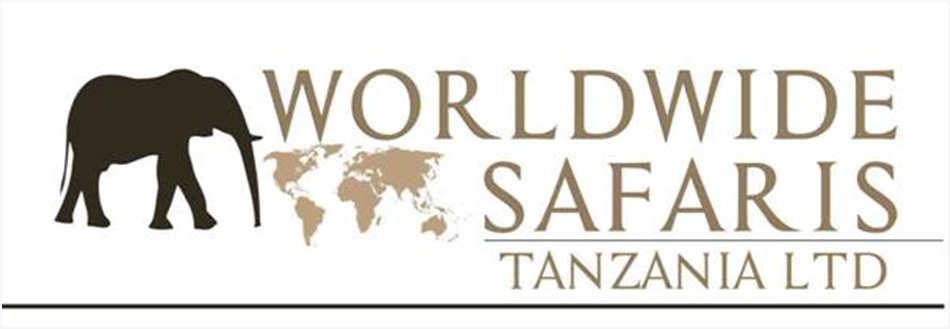
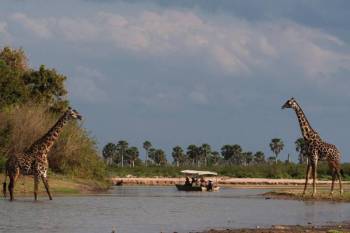 16D/15N
16D/15N
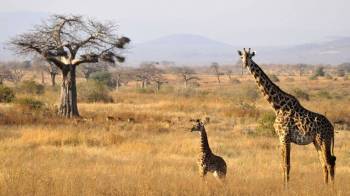 13D/12N
13D/12N
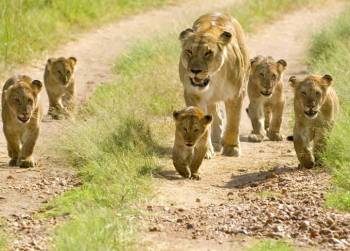 11D/10N
11D/10N
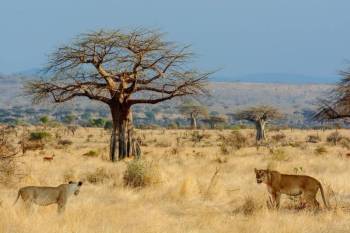 12D/11N
12D/11N
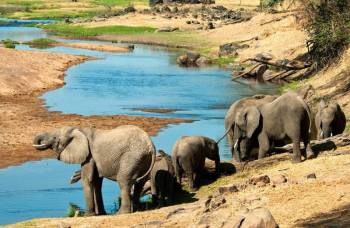 10D/9N
10D/9N
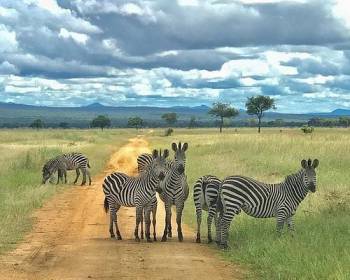 6D/5N
6D/5N
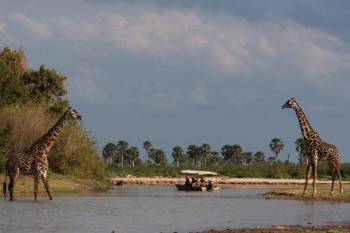 5D/4N
5D/4N
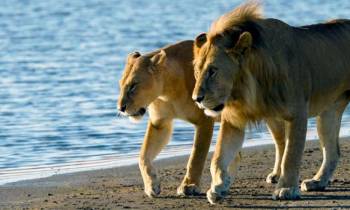 4D/3N
4D/3N
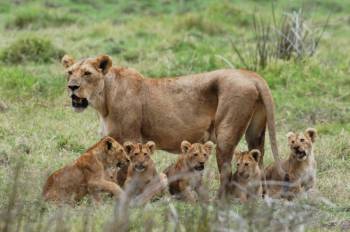 4D/3N
4D/3N
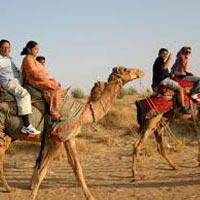 12D/11N
12D/11N
Camel Safari in Rajasthan Tour
New Delhi - Jodhpur - Jaisalmer - Ranakpur - Udaipur
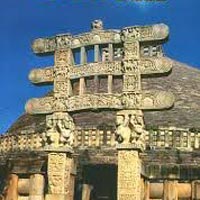 12D/11N
12D/11N
Back to Madhya Pradesh Tour (Central Ind..
Gwalior - Jhansi - Jabalpur - Bhopal - Tikamgarh - Chhatarpur - Kanha - Pachmarhi
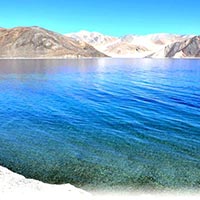 12D/11N
12D/11N
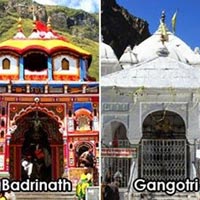 12D/11N
12D/11N
Chardham Yatra (Ex Delhi) 11 Nights / 12..
Haridwar - Garhwal - Uttarkashi - Rudraprayag - Chamoli - Rishikesh
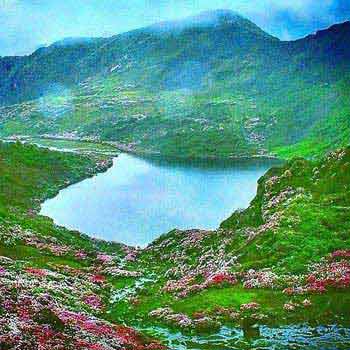 12D/11N
12D/11N
Guwahati - Kaziranga - Shillong - Tawang - Cherrapunji - Bomdila - Bhalukpong
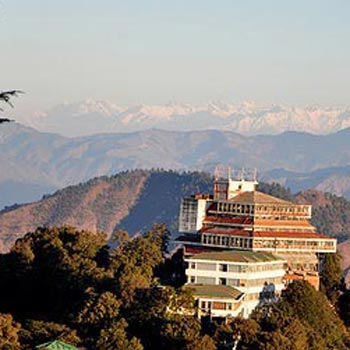 12D/11N
12D/11N
11nights/12days Himachal Punjab Romantic..
Chandigarh City - Shimla - Manali - Dharamshala - Dalhousie - Amritsar - Ludhiana -..
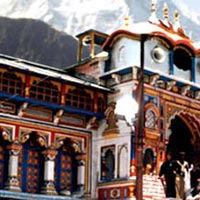 12D/11N
12D/11N
Haridwar - Rishikesh - Uttarkashi - Rudraprayag - Chamoli - Joshimath - Srinagar - ..
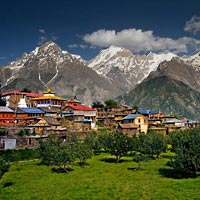 12D/11N
12D/11N
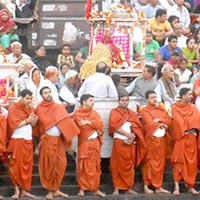 12D/11N
12D/11N
Haridwar - Rudraprayag - Rishikesh - Uttarkashi - Chamoli - Gangotri
10-Day Luxury Honeymoon Safari & Zanziba..
Manyara - Ngorongoro - Zanzibar - Arusha
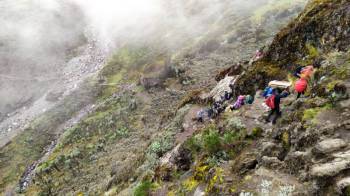 7D/6N
7D/6N
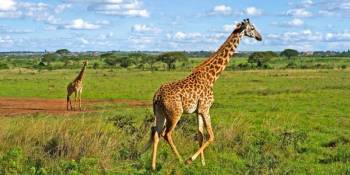 8D/7N
8D/7N
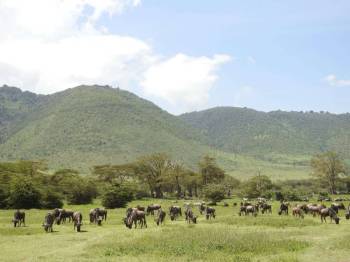 9D/8N
9D/8N
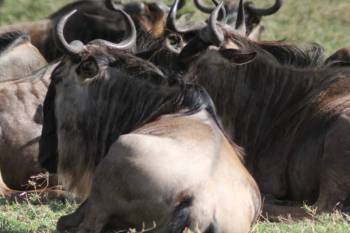 10D/9N
10D/9N
9 Nights 10 Days Safari, Wildlife Experi..
Arusha - Ngorongoro - Tarangire - Serengeti - Lake Natron - Lake Eyasi
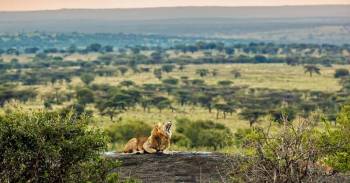 15D/14N
15D/14N
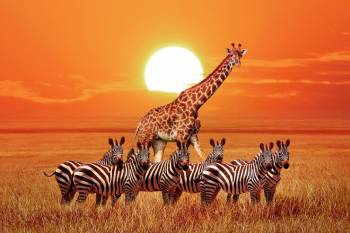 5D/4N
5D/4N
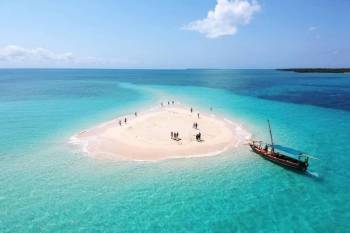 8D/7N
8D/7N
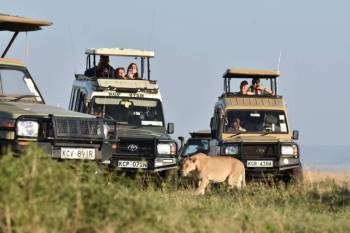 10D/9N
10D/9N
10-Day Kenya Tanzania Best Game Parks Sa..
Masai Mara - Ngorongoro - Arusha - Nakuru - Nairobi - Lake Victoria